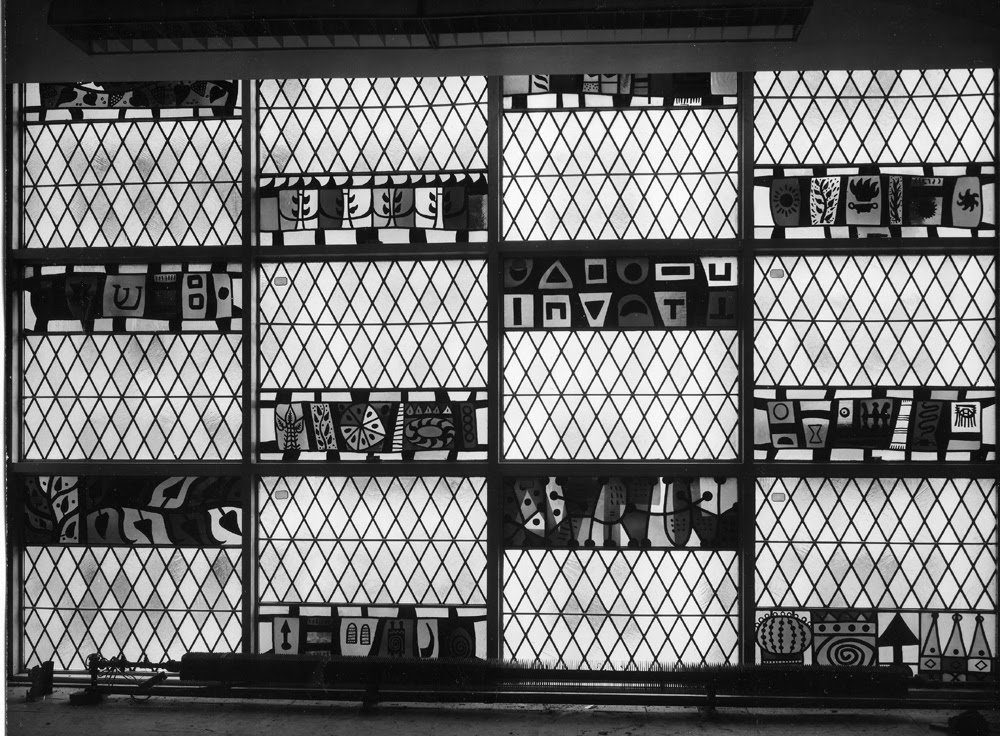Adolph Gottlieb, 1903-1974
By Toby Berryman
Gray Shadows, 1972, acrylic on canvas
From his sardonic rejection of “popular culture in any form”, to his fierce critique of “very jaded” art-dealers, and blunt dismissal of Jackson Pollock as “vastly overrated”, Abstract-Expressionist Adolph Gottlieb emerged as a quick-witted dissenting voice within 20th Century modernisms. Therefore, when a 1950 artist-protest sought to “reject the monster” of New York’s Museum of Modern Art and denounce its “contempt for modern painting", it was the dogmatic Gottlieb who penned their open letter.
Although this brief stint conducting the so-called ‘Irascibles’ is undoubtedly amongst Gottlieb’s best-known achievements, it constitutes but a small portion of a long-lasting and intriguingly diverse career which concluded with a 1974 memorial retrospective at the very same MoMA which he had once picketed!
Even from youth, Adolph Gottlieb’s life was both artistic and distinctly rebellious. At the age of just seventeen, he briefly settled (passport-less and effectively penniless) in Paris, before travelling across Europe for over a year, to “haunt” the continent’s museums and galleries. Upon his return to New York, he continued his formal artistic education, albeit not without continued shifts at the family stationery business to appease his father. Throughout the 1920s and 1930s, his work remained figurative and his career was supplemented by part-time jobs (even sign-painting) and commissions for the Federal Art Project. Yet his artistic circle continued to expand as he formed lifelong friendships with the likes of Mark Rothko and Barnett Newman whilst establishing ‘The Ten’.
Gottlieb later declared that “different times require different images” and this dynamic approach to artistic style became apparent during the 1940s. After briefly flirting with a surrealist influence, displayed in 1942’s The Sea Chest, it was his self-described ‘Pictographs’ series which typified that decade. Ironically named as such so that “critics have an easier time pigeonholing my work”, these compartmentalised paintings displayed unique symbols with an apparent continental-African influence. From these were born the immense ‘Burst’ paintings, exemplified by 1973’s Burma Red, which have since come to dominate Gottlieb’s visual legacy. Highly expressionistic, the works are often massive in scale, but share a common motif – suspended orbs atop calligraphic strokes. Developed concurrently was his ‘Imaginary Landscapes’ series, including works such as 1972’s Gray Shadows, expanding the burst-format to a quasi-terrestrial but markedly abstract setting.
Rabbi’s Office, Milton Steinberg House, Park Avenue Synagogue, 1953-4, stained glass
Gottlieb’s experimentation was not restricted purely to painterly style, and, in later life, he started to explore alternative media. Aged sixty-five, he began to make sculpture and his latter decades featured four architectural projects, culminating in the 1954 stained-glass façade of the Milton Steinberg House, encompassing over 1300 square-feet of hand-designed stylised panels. Although the ‘Burst’ series (which he had only started aged fifty-three) or LIFE Magazine’s ‘Irascibles’ photoshoot might adorn Art-History textbooks and Gottlieb’s obituaries, his diverse artistic life encompassed a great many more styles, series, and partnerships.
After suffering a stroke in Spring 1971, Gottlieb was tragically left half-paralysed and confined to a wheelchair. However, this did not halt his artistic career nor his socio-political voice. Instead, Gottlieb continued to paint and lecture throughout his final years, even completing a series of monotypes a mere fortnight before his death. He was buried in Hawthorne NY, on March 6th, 1974, and his artistic legacy was felt almost immediately. While the aforementioned MoMA memorial exhibition opened just a fortnight later, 1976 saw the formal creation of the nonprofit Adolph and Esther Gottlieb Foundation. Financed by his will, the charity continues to provide funding for the arts across the United States.
Bibliography
Breckenridge, J. “A Conversation Between Adolph Gottlieb and Jack Breckenridge”. Phoebus 2: A Journal of Art History (1979): 88-96.
Dembart, L. “Adolph Gottlieb, Abstractionist, Dies”. New York Times, National Edition. March 5, 1974. https://www.nytimes.com/1974/03/05/archives/adolph-gottlieb-abstractionist-dies.html.
Eversole, F. “The Regenerative Art of Adolph Gottlieb”. Theology Today 25, No. 2 (July 1968): 220-224.
Ferber, H. “Adolph Gottlieb: 1903-1974.” New York Times, National Edition. March 17, 1974. https://www.nytimes.com/1974/03/17/archives/adolph-gottlieb-19031974.html.
Hirsch, S. “About the Artist”. Adolph and Esther Gottlieb Foundation. 2024. https://www.gottliebfoundation.org/about-the-artist.
Landau, E. G. Reading Abstract Expressionism: Context and Critique. New Haven: Yale University Press, 2005.
Millard, C. W. “Adolph Gottlieb”. The Hudson Review 35, No. 4 (Winter, 1982-1983): 613-618.
Seckler, D. “Oral History Interview with Adolph Gottlieb”. Archives of American Art, Smithsonian Institution. October 25, 1967.
Wilkin, K. “The ‘Pictographs’ of Adolph Gottlieb”. New Criterion 13, No. 10 (June 1995): 15-21.


